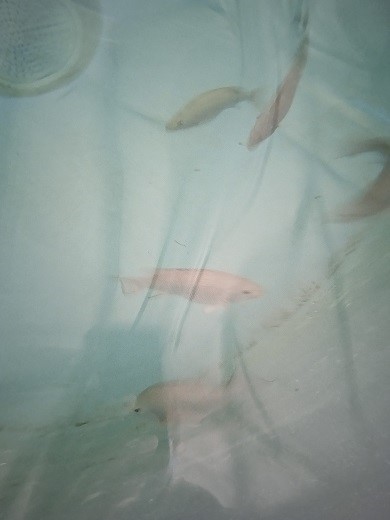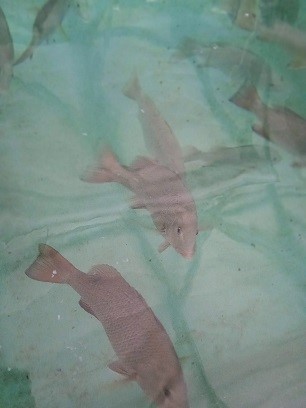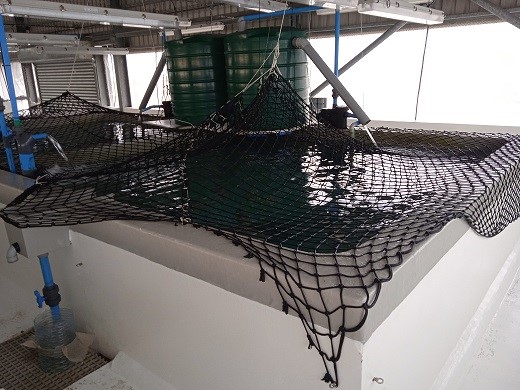The Mangrove Snapper is a hardy euryhaline species, meaning that it can tolerate a wide range of salinity and temperature differences and is recognized as a great potential aquaculture species in tropical regions. It is a widely distributed fish in the Indo-West Pacific and is native in Seychelles. Mangrove snapper is not the easiest species of snapper to fish. The juveniles and sub adults tend to be found in estuaries, so this is where the journey begins for us. We set out to catch these beauties in the estuaries and mangrove area around Mahé. Easier said than done because of the limited mangrove habitat that exist on the island, but we managed to collect what was needed.
The juvenile fish were caught using barbless hook and line. Once caught, they were handled with the softest touch so not to damage them in any ways. They were then placed in a one cube tank with only 250 litres of clean sea water and ice was added to the water. The reason for adding ice is to make sure the water stays cool for the trip back to the BAQF (Broodstock Acclimation and Quarantine Facility) which took about 45 minutes. The road on the island is quite tricky for fish transportation because of all the bends and uphill/downhill driving. Slow and steady was the pace.
Once at the facility the fish are left alone for one day and the next day they are treated for parasite. The remarkable thing with snappers is their ability to acclimatize in a very short period of time. Fish normally tend not to feed when they are stressed or uncomfortable, but we have seen countless times with snappers that the very next day after being placed in the holding tanks they immediately start feeding.
Once in our facility the average weight of the fish was calculated, and a feeding table was formulated. The feed ratio would change each month as the fish would take on weight. The average weight per fish was about 60grams when captured.
After a year in the tanks the snapper’s average weight was 2kilos with 100% survival rate.


Mangrove snapper reaches sexual maturity at different size. The male tends to reach maturity sooner than female. The male will mature at almost 3 kilos and the female at about 5 kilos. Fish can reach sexual maturity faster in an aquaculture facility due to optimum quality in water and feed. The fish was kept in 7 cube tanks (7000 L), and they have now been transferred to brood stock tanks that are 20 cube tanks (20000 L).


